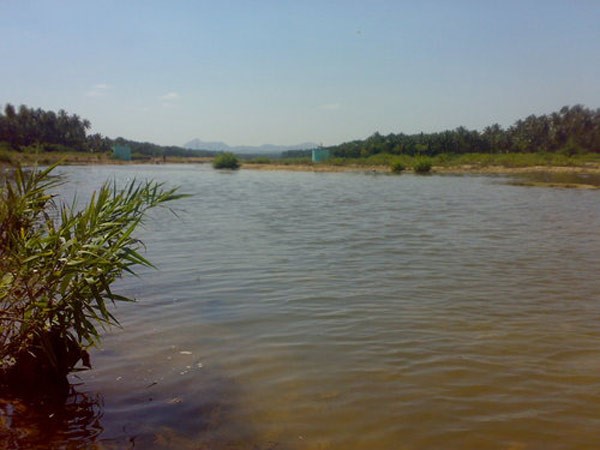- Sri Aadhi Varaha Perumal Temple is 54th divya desam is one of the 108 Divyadesam situated inside Sri Kamakshi Amman temple in Big Kanchipuram.
- It is one of the three most famous temples in Kanchipuram.
- It is one of the two temples in Kanchipuram, where a Divyadesam is inside a Shaivite temple.
PURANIC SIGNIFICANCE 1:
- Once, when Kamakshi and Sri Lakshmi were taking bath in Kama Koshtam, Emperumaan saw them by hiding behind a pillar and hearing what they were saying. Parvathi, who resembled “Kamakshi” found that Sriman Narayanan is watching them and so she gave the punishment by first making him stand and then to sit and finally to Kidantha stage.
- Because of this, he is found in all the 3 sevas (i.e) Nindra, Irundha and Kidantha seva on the North side of the pond of this koil.
- Since, Sriman Narayanan saw them taking bath without knowing them, parvathi kept him the name as “Kalvan” and this Divyadesam is called as “Thirukkalvanoor”, the One and Only Divyadesam among the 108 Divyadesam where the almighty is seen in a very small form as Adhivarahar.
PURANIC SIGNIFICANCE 2:
- According to the Sthala Purana, both Vishnu and Goddess Mahalakshmi were discussing the sins and good deeds committed by human beings.
- The subject later turned to beauty and personality. Goddess Mahalakshmi is very fair complexioned, and she stated that people, by having her Darshan (sacred vision), became very prosperous. Vishnu is dark-complexioned, and he did not agree with her view.
- He smiled and said that beauty was in the mind. People only had illusions from one’s appearance or external looks.
- Goddess Lakshmi did not agree with his opinion.
- Vishnu became angry, and he cursed Goddess Lakshmi to become formless so that no one could see her beauty.
- The Supreme Goddess sought his pardon and asked him to relieve her from the curse.
- Vishnu directed her to perform penance at a place where it would bring a manifold benefit for a single prayer.
- Goddess Mahalakshmi reached Kanchipuram and performed penance, praying to Vishnu, who granted her Darshan and returned her beauty.
- Legend also has it that when Goddess Parvati performed penance under a mango tree in Kanchipuram to be reunited with Shiva, she took the help of Vishnu.
- Hence, there is a shrine for Vishnu in Sri Kamakshi Amman Temple.
95632b.png)

